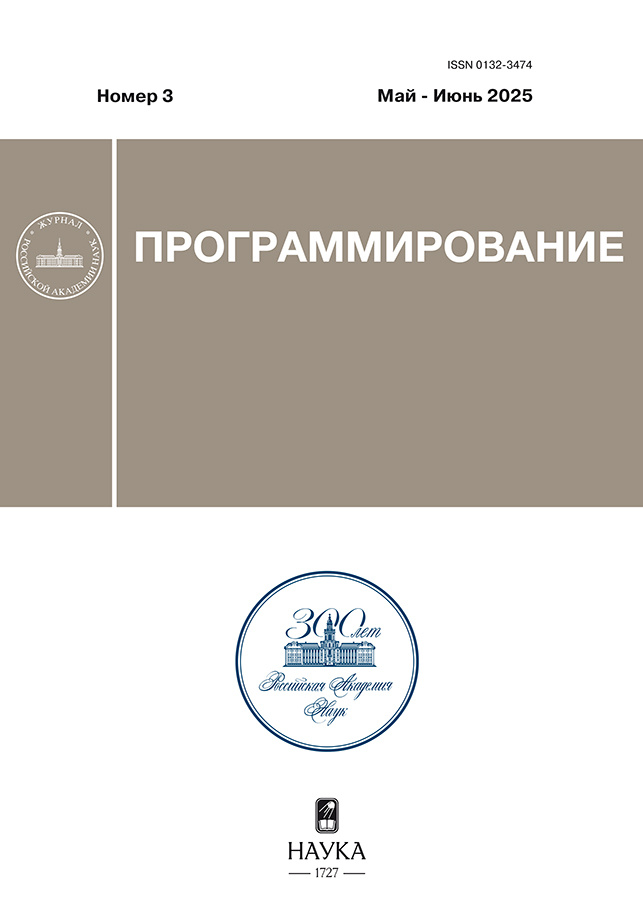A method for deferred rendering of a set of dynamic point light sources of voxelized scenes in real time
- Autores: Vyatkin S.I.1, Dolgovesov B.S.1
-
Afiliações:
- Institute of Automation and Electrometry, Siberian Branch of the RAS
- Edição: Nº 3 (2025)
- Páginas: 114–124
- Seção: COMPUTER GRAFICS AND VISUALIZATION
- URL: https://manmiljournal.ru/0132-3474/article/view/688128
- DOI: https://doi.org/10.31857/S0132347425030104
- EDN: https://elibrary.ru/GRQIHE
- ID: 688128
Citar
Texto integral
Resumo
With the increase in GPU performance, it has become possible to visualize complex physical phenomena in real time using global lighting algorithms. One such approach is the use of virtual point light sources, in which the realism of images depends on the number of light sources. However, for a large number of light sources, early algorithms required the creation of a large number of shadow maps to check visibility under virtual spot lighting. Therefore, it was problematic to achieve high-quality real-time images until new methods were developed. The purpose of the presented work is to create a delayed rendering method for thousands of point light sources based on voxelized scenes in real time. In the first pass, a geometric sparse voxel octal tree is calculated. A geometric buffer is used that stores information about location, normal, and materials for direct and indirect lighting. Then, reflective shadow maps are generated and selected by significance, so as not to check each texel. Direct illumination is calculated using shadow maps, and for indirect illumination, a ray marching algorithm is used to check the visibility of point light sources. Alternating sampling is used to speed up calculations. As a result, using the proposed method, it is possible to create realistic images of scenes with global illumination in real time. Using a GPU, you can calculate thousands of point light sources in real time, and visualize fully dynamic scenes. However, glossy surfaces require a greater number of point light sources so that images without artifacts accurately reproduce the appearance of the material.
Palavras-chave
Texto integral
Sobre autores
S. Vyatkin
Institute of Automation and Electrometry, Siberian Branch of the RAS
Autor responsável pela correspondência
Email: sivser@mail.ru
ORCID ID: 0000-0002-1591-3588
Rússia, Koptyuga Ave., 2, bldg. 1, Novosibirsk, 630090
B. Dolgovesov
Institute of Automation and Electrometry, Siberian Branch of the RAS
Email: bsd@iae.nsk.su
ORCID ID: 0000-0002-6255-9315
Rússia, Koptyuga Ave., 2, bldg. 1, Novosibirsk, 630090
Bibliografia
- Keller A. Instant radiosity. Proceedings of Siggraph'97, Computer Graphics Proceedings, 1997, pp. 49–56. doi: 10.1145/258734.258769.
- Dachsbacher C., Stamminger M. Splatting Indirect Illumination. Proceedings of the 2006 symposium on Interactive 3D graphics and games, 2006, pp. 93–100. doi: 10.1145/1111411.1111428.
- Ritschel T., Eisemann E., Ha I., Kim J., Seidel H.-P. Making Imperfect Shadow Maps View-Adaptive: High-Quality Global Illumination in Large Dynamic Scenes. Computer Graphics Forum, 2011, vol. 30, no. 8. pp. 2258–2269. doi: 10.1111/j.1467-8659.2011.01998.x.
- Dachsbacher C., Stamminger M. Reflective Shadow Maps. Proceedings of the 2006 symposium on Interactive 3D graphics and games, 2005, pp. 203–208. doi: 10.1145/1053427.1053460.
- Wald I., Benthin C., Slusallek P., Kollig T., Keller A. Interactive Global Illumination using Fast Ray Tracing. Proceedings of the 2002 Eurographics Workshop on Rendering, 2002, pp. 15–24. doi: 10.2312/EGWR/EGWR02/015-024.
- Segovia B., Iehl J.C., Mitanchey R., Peroche B. Non-Interleaved Deferred Shading of Interleaved Sample Patterns. Proceedings of the 21st ACM SIGGRAPH/EUROGRAPHICS symposium on graphics hardware, 2006, vol. 3, pp. 53–60. doi: 10.1145/1283900.1283909.
- Olsson O., Assarsson U. Tiled Shading. Journal of Graphics, GPU, and Game Tools, 2011, vol. 15, no. 4, pp. 235–251. doi: 10.1080/2151237X.2011.621761.
- Olsson O., Billeter M., Assarsson U. Clustered Deferred and Forward Shading. Proceedings of the ACM SIGGRAPH/EUROGRAPHICS Conference on High Performance Graphics, 2012, pp. 87–96. doi: 10.2312/EGGH/HPG12/087-096.
- Popov S., Georgiev I., Slusallek P., Dachsbacher C. Adaptive quantization visibility caching. Computer Graphics Forum, 2013, vol. 32, no. 2, pp. 1–10. doi: 10.1111/cgf.12060.
- Yuksel C. Stochastic Lightcuts for Sampling Many Lights. IEEE Transactions on Visualization and Computer Graphics, 2020, vol. 27, no. 10, pp. 4049–4059. doi: 10.1109/TVCG.2020.3001271.
- Lin D., Yuksel C. Real-Time Rendering with Lighting Grid Hierarchy. Proceedings of the ACM on computer graphics and interactive techniques, 2019, vol. 2, no. 1, pp. 1–17. doi: 10.1145/3321361.
- Archer J., Leach G., Knowles P. Fast raycasting using a compound deep image for virtual point light range determination. Computational Visual Media, 2019, vol. 5, pp. 257–265. doi: 10.1007/s41095-019-0144-1.
- Vyatkin S.I., Dolgovesov B.S. Compression of Geometric Data with the Use of Perturbation Functions. Autometriya, 2018, vol. 54, no. 4, pp. 18–25 (in Russ.). doi: 10.15372/AUT20180403.
- Vyatkin S.I. Polygonization method for functionally defined objects. International Journal of Automation, Control and Intelligent Systems, 2015, vol. 1, no. 1, pp. 1–8.
- Yalciner B., Sahillioglu Y. Voxel transformation: scalable scene geometry discretization for global illumination. Journal of Real-Time Image Processing, 2020, vol. 17, no. 6, pp. 1585–1596. doi: 10.1007/s11554-019-00919-1.
- Gadia D., Lombardo V., Maggiorini D., Natilla A. Implementing Many-Lights Rendering with IES-Based Lights. Applied Sciences, 2024, vol. 14, no. 3, pp. 1–15. doi: 10.3390/app14031022.
- Lensing P., Broll W. Efficient shading of indirect illumination applying reflective shadow maps. ACM Symposium on Interactive 3D Graphics and Games, 2013, pp. 95–102. doi: 10.1145/2448196.2448211.
- Hart D., Pharr M., Müller T., Lopes W., McGuire M., Shirley P. Practical Product Sampling by Fitting and Composing Warps. Computer Graphics Forum, 2020, vol. 39, no. 4, pp. 149–158. doi: 10.1111/cgf.14060.
Arquivos suplementares





















